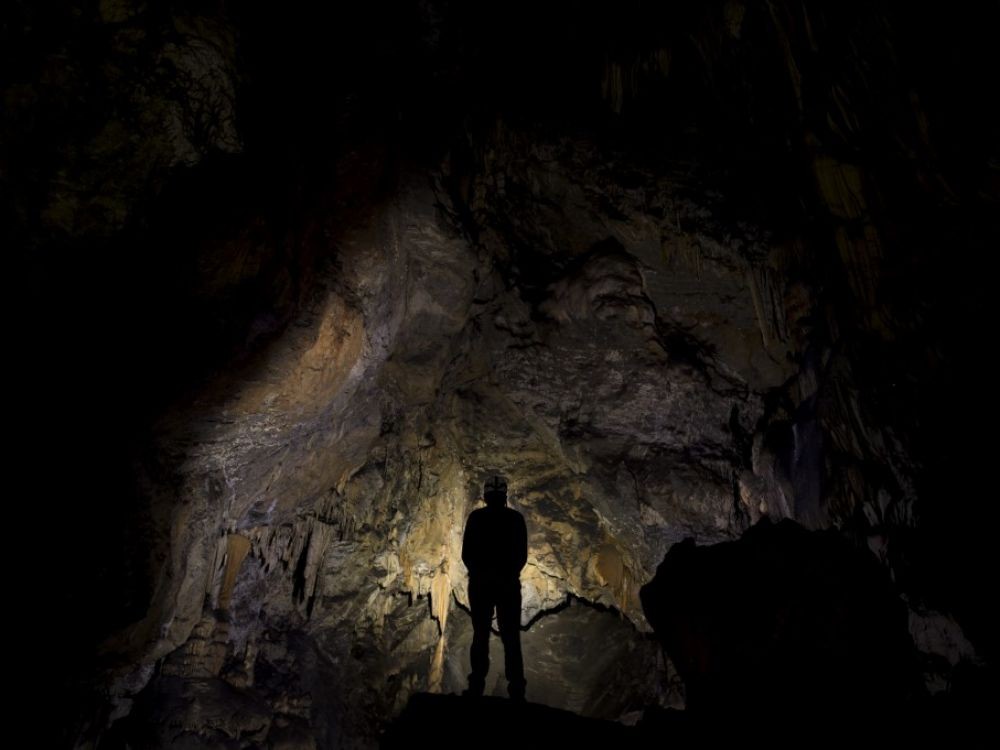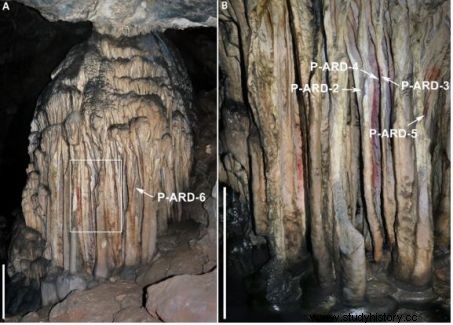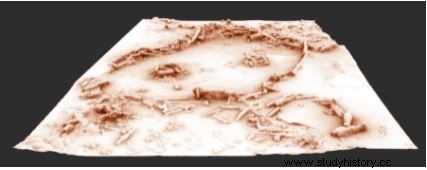Neanderthals would have left red ocher remains on the walls of an Andalusian cave 65,000 years ago in Spain.

Prehistoric cave of Ardalès, in Andalusia (Spain).
In the province of Malaga, in the south of Spain, about fifty kilometers from the Mediterranean coast, is the cave of Ardales, also known as Cueva de Dona Trinidad. Famous for its parietal art, the prehistoric cavity, discovered in 1821 following an earthquake which had exposed the sealed porch, unfolds over more than 1.5 km in depth, pictographic treasures from the Upper Palaeolithic. Mainly from the Solutrean (20,000 years) and Aurignacian (45,000 years) periods, more than a thousand figures of deer, equines, birds, others of human forms were revealed there by Henri Breuil, from 1918.
24 red marks identified as pictorial elements
However, scientific interest in this site has recently been revived after the formal identification of pictorial elements – 24 red marks – executed by Middle Paleolithic populations, tens of thousands of years earlier. Thus, confirming the data obtained in 2018, an article published in Proceedings of the National Academy of Sciences (PNAS)* returns to the examination of these pigments and their age. According to these results, the dating of different samples of calcite – a crystallized form of calcium carbonate resulting from the runoff of water – which covered colored residues present on an impressive stalagmitic dogma in the heart of the so-called room of the Stars – a drape of concretions minerals (speleothems)–, make these red lines go back 65,000 years.
They could therefore only have been the work of Neanderthal man, the only species to evolve on the European continent in these glacial times. "It is not a question of saying that we are facing the first parietal works of humanity, but rather before the oldest voluntary applications of ocher on walls by Neanderthals", told Sciences et Avenir , Francesco d'Errico, researcher at the Pacea laboratory "From prehistory to the present day:culture, environment and anthropology" (CNRS/University of Bordeaux/Ministry of Culture), co-signer of the publication.
 Red ocher traces dated 65,000 years ago, found on the stalagmitic draperies of the "hall of Stars" in the depths of the cave of Ardalès, in Andalusia (Spain). ©PNAS
Red ocher traces dated 65,000 years ago, found on the stalagmitic draperies of the "hall of Stars" in the depths of the cave of Ardalès, in Andalusia (Spain). ©PNAS
Neanderthal man as the "first artist":a more or less speckled foil debate
For several decades, in fact, part of the community of prehistorians has been opposed to more or less speckled foils on the capacities that Neanderthal man could have had to claim the title of "first artist". "One thing is certain concerning the red traces of Ardales, the numerous microscopic and chemical analyzes carried out (optical microscopy, scanning electron microscopy, micro-Raman spectroscopy, etc.), have proven that these ochres had been brought back from sources outside the cave:these are indeed pigments and in no way the result of natural processes" , says Francesco d’Errico.
The announcements did not stop there. The 65,000-year dating obtained by the Uranium-thorium (U-Th) method – the same one used to date the prehistoric figures of the site of Leang Tedongnge, in the island of Sulawesi (Indonesia) currently considered to be the oldest rock works of the world (45,500 years) –, would testify above all to multiple deposits. "At Ardales, a succession of recurring pigment applications were carried out in the same place, on stalagmites, during several incursions, over thousands of years" , continued Francesco d’Errico, thus opening the door to possible symbolic behavior. These pipes are also reminiscent of those of one of the most spectacular Neanderthal achievements encountered to date:the circles of broken concretions dated 176,500 years old, found inside the Bruniquel cave (Tarn-et-Garonne ), by Jacques Jaubert and his Pacea team in 2016.
 3D reconstructions of Neanderthal circular structures from Bruniquel cave (Tarn-et-Garonne). ©Xavier Muth. Archaeotransfer, Archeovision SHS-3D. Pascal Mora
3D reconstructions of Neanderthal circular structures from Bruniquel cave (Tarn-et-Garonne). ©Xavier Muth. Archaeotransfer, Archeovision SHS-3D. Pascal Mora
More than 2 tons of intentionally fractured stalagmites had been moved to compose two large annular structures on the ground and four smaller ones. "It seems to me that Ardalès confirms the interest shown by Neanderthals in the underground world, and in speleothems as a means of expression of their symbolic system". A possible way for generations of Neanderthals to perpetuate the particular value of a place.
